Homelessness is a problem that many cities face around the world. Even though governments and organizations are trying to fix it, it’s still a big issue. One Canadian millionaire decided to make a difference in his own town with his money. Here’s his story.
In Fredericton, New Brunswick, Marcel LeBrun, a millionaire entrepreneur, took action to help homeless people in his community. Marcel, who made a lot of money from his successful social media monitoring company, decided to invest $4 million of his own money to build 99 tiny homes for those in need. He didn’t just stop at providing homes; he also created job opportunities with his unique approach. This project is called 12 Neighbours.
After selling his company and gaining a lot of wealth, Marcel wanted to use his money for good. Seeing the homelessness issue in Fredericton, he came up with the idea of a tiny home community to give homeless people a new start. He named his project 12 Neighbours and aimed to build a gated community with 99 homes and an enterprise center. This community offers both housing and job opportunities, giving homeless people a chance to rebuild their lives.
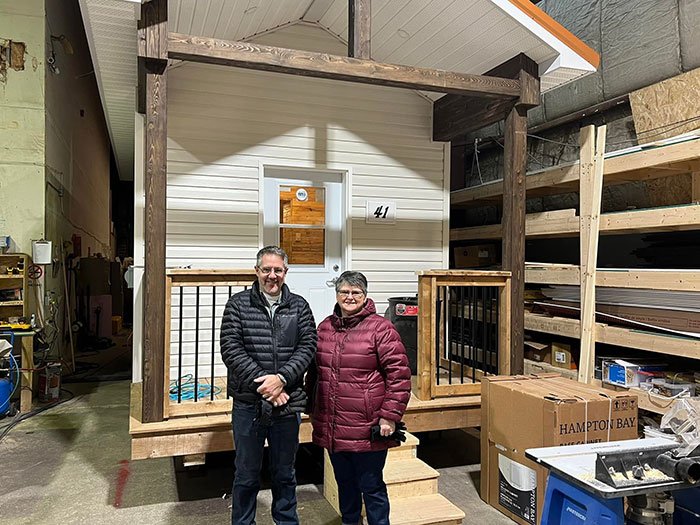
Homelessness is a big issue in New Brunswick, with about 1,600 people experiencing it in a single day last year. In bigger cities like San Francisco, Los Angeles, and New York in the United States, the number of homeless people is much higher. Marcel LeBrun saw a chance to make a difference and decided to help those struggling with homelessness.
Marcel’s project, 12 Neighbours, is not just about building tiny homes. He wants to create a supportive community for people. The tiny homes he’s building are more than just places to stay. They are fully-furnished with kitchens, living areas, bedrooms, and full bathrooms. They even have solar panels on the roofs. Marcel sees himself as a community builder, aiming to provide a better life for those in need.

To make his vision a reality, Marcel LeBrun set up a factory where skilled volunteers help build the tiny homes. Using modern techniques, the factory can produce one tiny home every four business days. Once a home is built, it is carefully placed on concrete blocks to form the foundation of the community.
Marcel believes that owning a home is important because it gives people a sense of responsibility and stability. By allowing people who have experienced homelessness to own their own homes, the 12 Neighbours project aims to empower them and create a supportive community.

Besides providing homes, Marcel LeBrun’s project also focuses on creating job opportunities for the residents. The 12 Neighbours community includes an enterprise center with a coffee bar and a silk printing business, both run by the residents. This helps generate income and encourages residents to interact with the wider community.
Like any big project, 12 Neighbours has faced criticism. Some people think it’s better to reintegrate homeless individuals directly into society rather than keeping them together in one place. However, Marcel understands these concerns and has taken steps to ensure the community is safe and supportive.
Marcel explained, “Building a few homes is just as complicated as building many, and we wanted to make a real impact on homelessness in Fredericton. If we want to make a meaningful difference, we need to build houses. If I take someone who’s been living outside and put them in a luxury apartment, they might not succeed because it’s not their community or environment.”
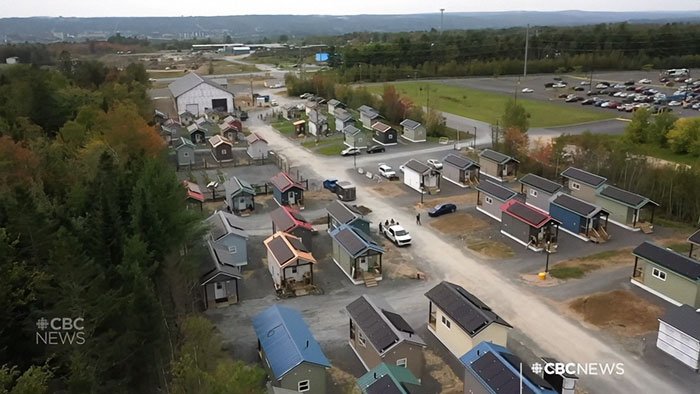
Marcel LeBrun knows how important safety is, so he has included top security features in the 12 Neighbours community. There are gated entrances and advanced surveillance systems to ensure residents feel safe and protected.
LeBrun mentioned that some residents face challenges when they first move in. He explained, “When someone moves into a house, they might have others trying to take advantage of them. They need to learn what it means to manage their own space and decide who they let in and out.”
One of the main goals of 12 Neighbours is to build a strong sense of community both inside and outside its gates. LeBrun wants to create a place where residents and the people of Fredericton can come together. The community has a coffee bar and a personalized printing business to encourage interaction and understanding.
LeBrun told CBC, “I see myself as a community builder. We’re not just building a small community; we’re helping to make our city better.”
Marcel LeBrun’s project to build 99 tiny homes in Fredericton, New Brunswick, is a great example of using personal success to help others. Through 12 Neighbours, he has not only provided homes for those in need but also created job opportunities and a supportive community. His efforts have given hope to many and inspired others to make a difference.
Minha sogra e as irmãs do meu marido me obrigaram a limpar tudo sozinha depois da Páscoa — eu concordei, mas elas não estavam preparadas para minha “surpresa”

Quando a família do meu marido decidiu que eu seria a empregada pessoal deles na Páscoa, eles não faziam ideia de que eu já tinha escondido algo especial junto com aqueles coelhinhos de chocolate. O que aconteceu depois foi algo que ainda me faz rir.
Nunca fui do tipo que conta roupa suja online. Sério, não sou. Mas o que aconteceu nesta Páscoa foi perfeito demais para não compartilhar.

Uma mulher segurando uma cesta de ovos | Fonte: Pexels
Meu nome é Emma, tenho 35 anos, trabalho como diretora de marketing em uma empresa de médio porte e sou casada com o Carter há três anos maravilhosos. O Carter é tudo o que eu poderia desejar. Ele é solidário, atencioso, engraçado e sabe como colocar a louça na máquina de lavar louça corretamente.
Nossa vida juntos tem sido quase perfeita, exceto por um problema gritante: SUA FAMÍLIA.
“Emma, querida, você pode me trazer outra mimosa enquanto está acordada?”, a voz da minha sogra, Patricia, ecoou pelo nosso quintal no mês passado, embora eu mal tivesse dado dois passos em direção à cozinha.
Ela não se moveu da poltrona acolchoada por mais de uma hora.

Uma mulher sentada em uma sala de estar | Fonte: Midjourney
Não sou daquelas pessoas que reclamam de tudo. Não posto status passivo-agressivos nem compartilho minhas queixas nas redes sociais. Mas a mãe do Carter e suas três irmãs, Sophia, Melissa e Hailey… elas são especiais. E por especiais, quero dizer aquelas que se sentem privilegiadas.
“Claro, Patricia”, respondi com o sorriso treinado que aperfeiçoei ao longo de três anos de casamento.
Desde o primeiro dia, eles deixaram claro que eu não era exatamente o que eles tinham em mente para Carter.

Um homem em pé em uma sala de estar | Fonte: Midjourney
Eles são o tipo de pessoa que acredita estar sempre certa e que nunca me aceitou de verdade. São o tipo de pessoa que faz elogios envoltos em arame farpado.
“Ah, Emma, você é tão corajosa em usar algo tão apertado”, comentou Sophia, a mais velha, de 41 anos, em nossa última reunião de família, olhando para meu vestido perfeitamente normal.
Melissa, 39, nunca perde a oportunidade de comentar sobre meus hábitos alimentares. “Que bom que você não se importa com calorias”, ela dizia enquanto me observava dar uma única mordida na sobremesa.
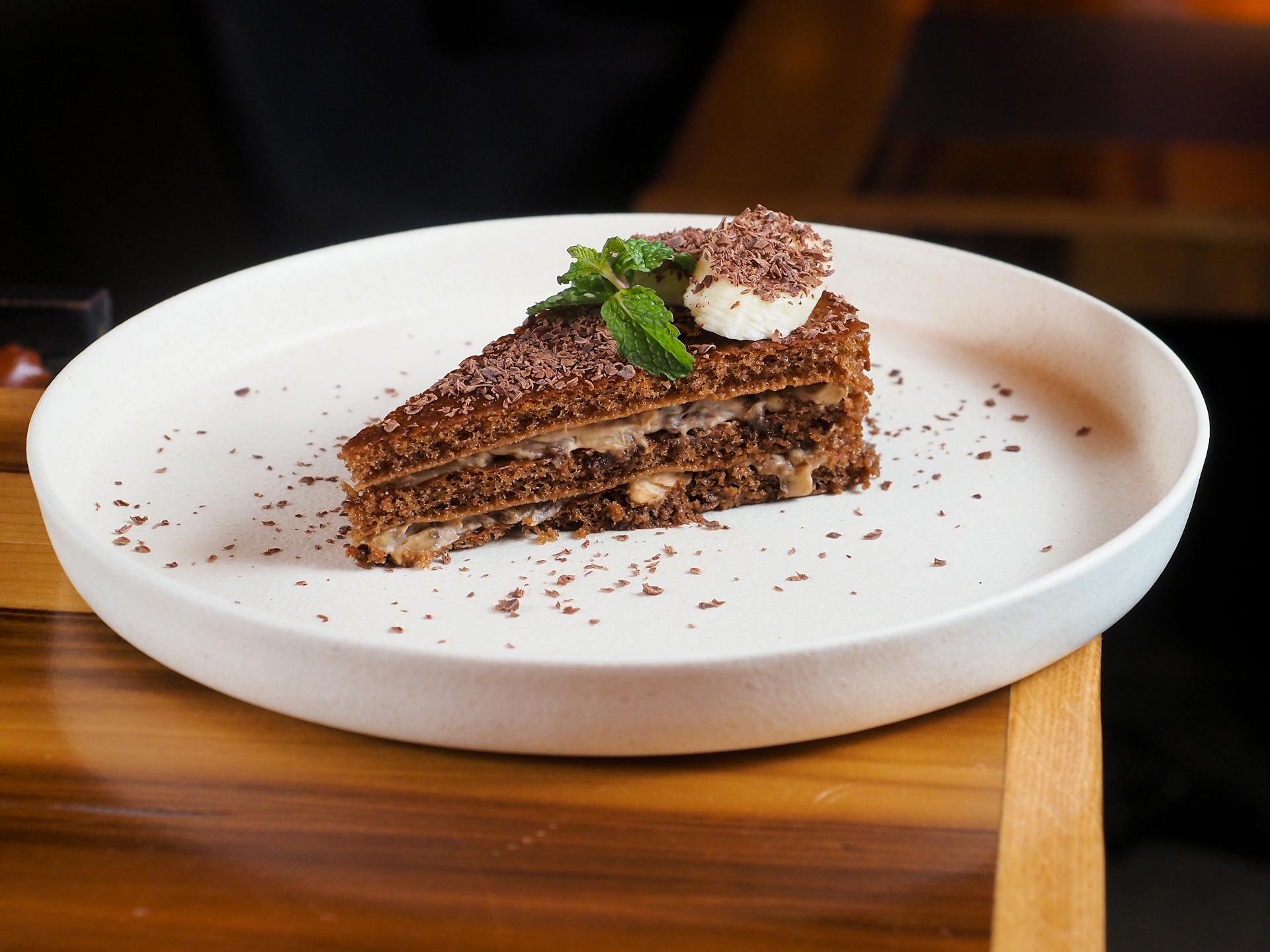
Uma fatia de bolo em um prato | Fonte: Pexels
E tem a Hailey, de 34 anos, que, apesar de ser mais nova que eu, sempre consegue soar como uma tia desaprovadora. “Nossa família tem tradições fortes. Espero que você consiga manter.”
Mas nesta Páscoa? Ah, eles realmente se superaram.
“Já que você e Carter ainda não têm filhos”, anunciou Melissa três semanas antes da Páscoa, enquanto seus três filhos subiam em meus móveis recém-limpos, “faria sentido vocês organizarem a Caça aos Ovos de Páscoa”.
Não basta esconder alguns ovos de plástico. Não.
Eu deveria criar um evento inteiro: pistas para uma caça ao tesouro, fantasias e até contratar um mascote de coelho com meu próprio dinheiro.

Uma pessoa fantasiada de coelho segurando um cachorro | Fonte: Pexels
“Isso realmente mostraria que você se importa com a nossa família”, acrescentou Sophia, tomando seu café com leite e ajustando seus óculos de sol enormes enquanto relaxava no meu quintal.
Carter apertou minha mão por baixo da mesa. “Parece muito trabalho”, começou ele, mas suas irmãs o interromperam.
“É só o que fazemos nesta família”, Hailey deu de ombros, embora eu nunca a tivesse visto levantar um dedo para organizar alguma coisa.
Tudo bem. Engoli meus protestos. Por enquanto.
Eles mal sabiam que eu já tinha começado a elaborar um plano que faria com que esta Páscoa fosse inesquecível.

Uma mulher escrevendo em um caderno | Fonte: Pexels
Dois dias antes da Páscoa, meu celular apitou com uma mensagem de texto. Patricia tinha criado um grupo de bate-papo familiar. Menos Carter, é claro.
“Já que você já está ajudando, querida, seria MARAVILHOSO se você preparasse o jantar de Páscoa! Carter merece uma esposa que saiba receber bem. 
Fiquei olhando para o meu telefone, minha pressão arterial subindo a cada notificação enquanto Sophia, Melissa e Hailey davam suas “sugestões”.

Uma mulher usando seu telefone | Fonte: Pexels
O que ela realmente queria dizer era: cozinhe para 25 pessoas. Uma refeição completa: presunto, purê de batatas, caçarola de vagem, ovos recheados, pãezinhos, duas tortas e “uma opção mais leve para quem está de olho na silhueta”.
Nenhum deles se ofereceu para trazer sequer uma torta.
“Eles querem que você faça o quê?”, perguntou Carter quando lhe mostrei as mensagens. Seu rosto ficou vermelho de raiva. “Isso é ridículo. Vou falar com eles.”
“Não”, eu disse, colocando a mão em seu braço. “Não se preocupe com isso.”
“Mas Emma, isso dá muito trabalho. Deixe-me pelo menos contratar um bufê.”

Um close-up do rosto de um homem | Fonte: Midjourney
Sorri e beijei sua bochecha. “Eu consigo, confia em mim.”
O domingo de Páscoa chegou com um clima primaveril perfeito. Eu estava acordada desde o amanhecer, escondendo ovos para a caçada mais tarde e preparando o banquete que eles pediram. Ao meio-dia, nossa casa estava cheia com a família de Carter. Sua mãe, três irmãs, seus maridos e filhos de quatro a 12 anos.
“Emma, este presunto está um pouco seco”, comentou Patricia segundos depois de dar a primeira mordida.
“As batatas precisam de mais manteiga”, acrescentou Melissa.

Purê de batatas na tigela | Fonte: Pexels
“Na nossa família, geralmente servimos o molho em uma molheira adequada, não em um copo medidor”, Sophia destacou, embora eu tivesse usado a molheira antiga da minha avó.
Carter começou a me defender, mas eu o encarei e balancei a cabeça levemente. Ainda não.
Eles comeram. Eles destruíram a cozinha. Deixaram os filhos à solta, espalhando chocolate por todo lado.
O caçula da Melissa até derrubou um vaso, e ninguém se deu ao trabalho de recolher os cacos. Tudo o que ouvi foi: “Crianças são crianças!”
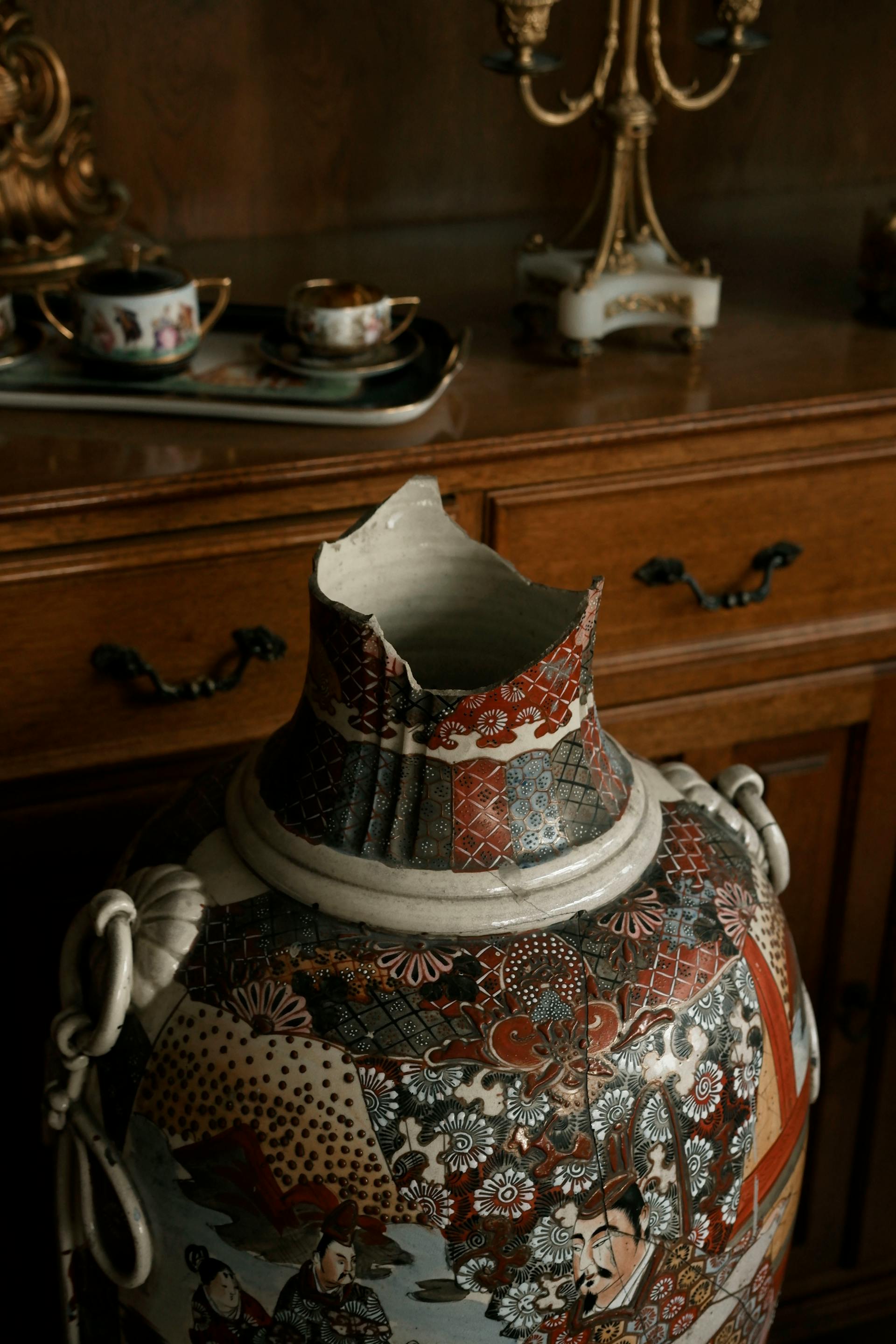
Um vaso quebrado | Fonte: Pexels
E então, depois de se empanturrarem, eles se acomodaram nos sofás com suas taças de vinho, sem mover um músculo.
“Emma”, Sophia olhou por cima do ombro e disse, “a cozinha não vai se limpar sozinha”.
“Ah, querida”, acrescentou Patricia. “Agora você pode limpar tudo. Hora de mostrar que você é uma esposa de verdade.”
Elas sorriram, acomodando-se no sofá como rainhas mimadas enquanto seus maridos desapareciam para assistir basquete na sala.
Carter se levantou. “Eu te ajudo, Emma.”
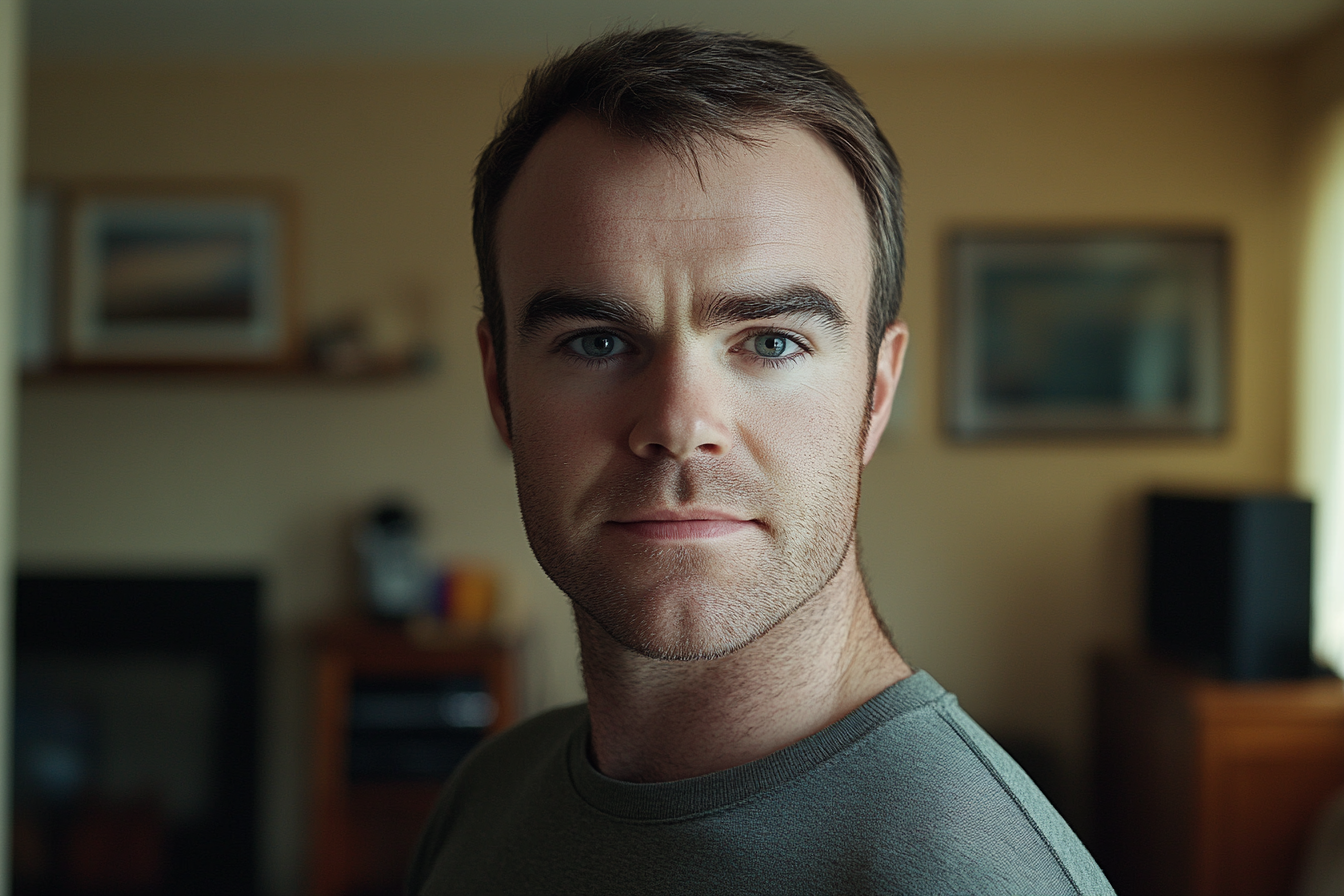
Um homem olhando para frente | Fonte: Midjourney
“Não, querida”, eu disse alto o suficiente para todos ouvirem. “Você trabalhou duro a semana toda. Vai relaxar com os rapazes.”
As irmãs trocaram olhares satisfeitos. Elas achavam que tinham vencido.
Eu sorri. Ah, eu sorri tão docemente. Bati palmas.
“Com certeza!”, respondi animada. “Eu cuido de tudo!”
Seus rostos presunçosos relaxaram enquanto voltavam à conversa sobre o cruzeiro de Sophia. Hailey colocou os pés em cima da minha mesa de centro, e seus sapatos deixaram pequenas marcas na madeira.
“Crianças!”, gritei alegremente. “Quem está pronto para a Caça aos Ovos de Páscoa especial agora?”

Uma garota sorrindo | Fonte: Pexels
Crianças animadas vieram correndo de vários cantos da casa.
“Mas eu pensei que já tivéssemos feito a caça aos ovos esta manhã”, disse Patricia.
“Ah”, eu disse, piscando para as crianças. “Essa foi só a caçada de sempre. Agora é hora do Desafio do Ovo de Ouro.”
As crianças gritaram de excitação.
“O que é o Desafio do Ovo de Ouro?”, perguntou o filho de dez anos de Melissa, praticamente pulando de excitação.

Um menino em pé em uma sala de estar | Fonte: Midjourney
“Bem”, expliquei, tirando um ovo de plástico dourado e brilhante do bolso, “enquanto eu estava organizando a Caça aos Ovos de Páscoa de sempre esta manhã, escondi algo muito especial.”
As crianças se reuniram ao meu redor, com os olhos arregalados de admiração pelo ovo brilhante na minha palma.
“Dentro deste ovo de ouro há um bilhete sobre um PRÊMIO MUITO ESPECIAL”, eu disse, baixando a voz dramaticamente. “Muito melhor que doce.”
“Melhor que doce?” A filha de oito anos de Sophia engasgou como se eu tivesse dito que a lua era feita de queijo.
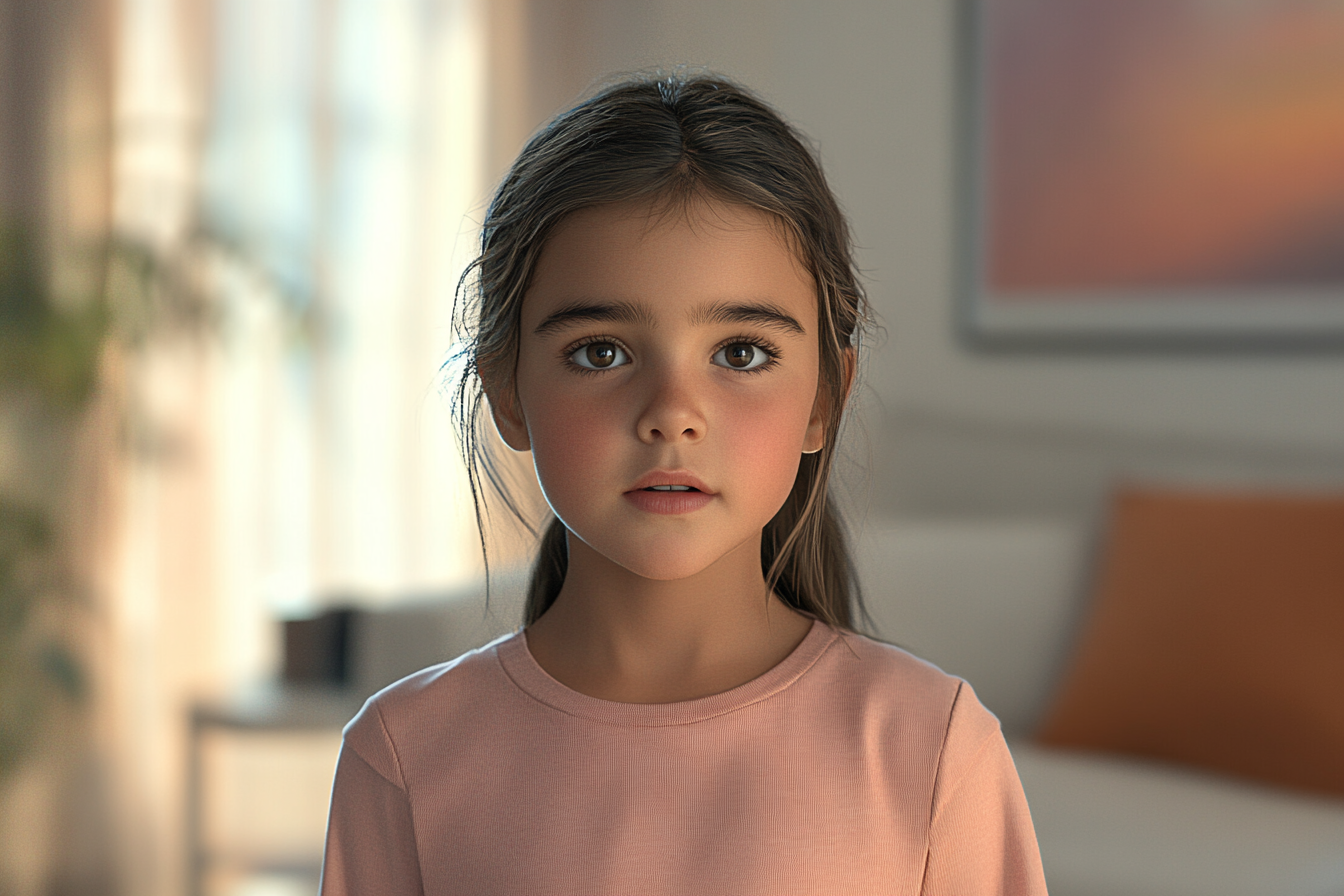
Uma garotinha | Fonte: Midjourney
“Com certeza. É um prêmio com TODAS AS DESPESAS PAGAS!”, anunciei.
As crianças estavam praticamente salivando. Eu podia sentir Patricia e suas filhas observando com leve interesse do sofá, provavelmente presumindo que eu estava falando de algum brinquedo ou vale-presente.
“O ovo de ouro está escondido em algum lugar no quintal”, continuei. “Quem o encontrar ganha o grande prêmio! Preparado?”
As crianças correram para a porta dos fundos, quase atropelando umas às outras para serem as primeiras a sair.

Uma criança saindo de uma porta | Fonte: Midjourney
“Que gentileza sua, Emma”, disse Patricia do sofá. “Mantenha-os ocupados enquanto digerimos.”
Carter cruzou o olhar comigo do outro lado da sala e ergueu uma sobrancelha. Eu apenas pisquei.
Quinze minutos de busca frenética depois, ouvimos um grito triunfante vindo do canto mais distante do jardim.
“EU ACHEI! EU ACHEI O OVO DE OURO!”
Era a filha de Sophia, Lily, correndo pelo gramado, acenando o ovo de ouro sobre a cabeça como uma tocha olímpica.
Perfeito. Eu não poderia ter planejado melhor se tivesse tentado.

Um ovo de ouro | Fonte: Pexels
“Parabéns, Lily!”, gritei enquanto todos se reuniam ao redor. “Você gostaria de abrir e ler seu prêmio?”
A menina de oito anos abriu ansiosamente o ovo de plástico e tirou um pequeno pedaço de papel enrolado. Sua testa franziu enquanto ela tentava ler.
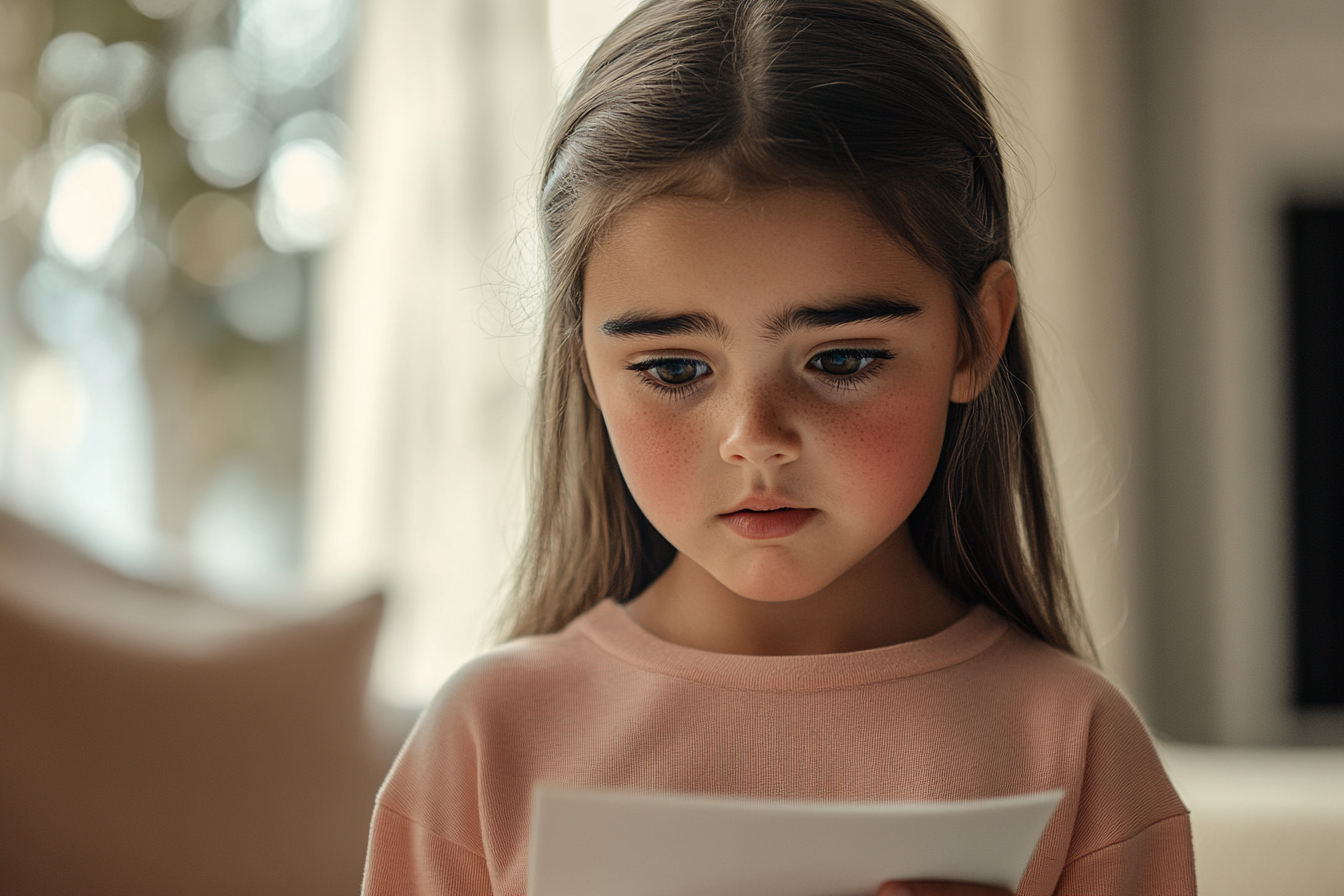
Uma menina olhando para um pedaço de papel | Fonte: Midjourney
“Você gostaria que eu lesse para todo mundo?”, ofereci docemente.
Ela assentiu e me entregou o papel.
“Aham”, pigarreei dramaticamente. “O vencedor do Ovo de Ouro recebe o GRANDE PRÊMIO: você e sua família cuidam de TODA a limpeza da Páscoa! Parabéns!”
Por três lindos segundos, um silêncio absoluto caiu sobre nosso quintal.
Então veio o alvoroço.
“O quê?” Sophia gaguejou, quase engasgando com o vinho.
“Isso não é um prêmio!” Melissa protestou.
Lily pareceu confusa. “Preciso limpar?”

Uma garota chateada | Fonte: Midjourney
“Não só você”, esclareci alegremente. “Sua família inteira pode ajudar! Não é emocionante? Toda a louça, a cozinha, a coleta de embalagens de doces… tudo!”
“Emma”, começou Patricia, com a voz severa. “Isso é só uma brincadeira, né?”
“Ah, não, é o prêmio oficial do Ovo de Ouro”, insisti. “As crianças ficaram tão animadas com isso.”
E foi então que a coisa mais magnífica aconteceu. Todas as crianças começaram a cantar: “LIMPE! LIMPE!”
Carter caiu na gargalhada, incapaz de se conter por mais tempo.
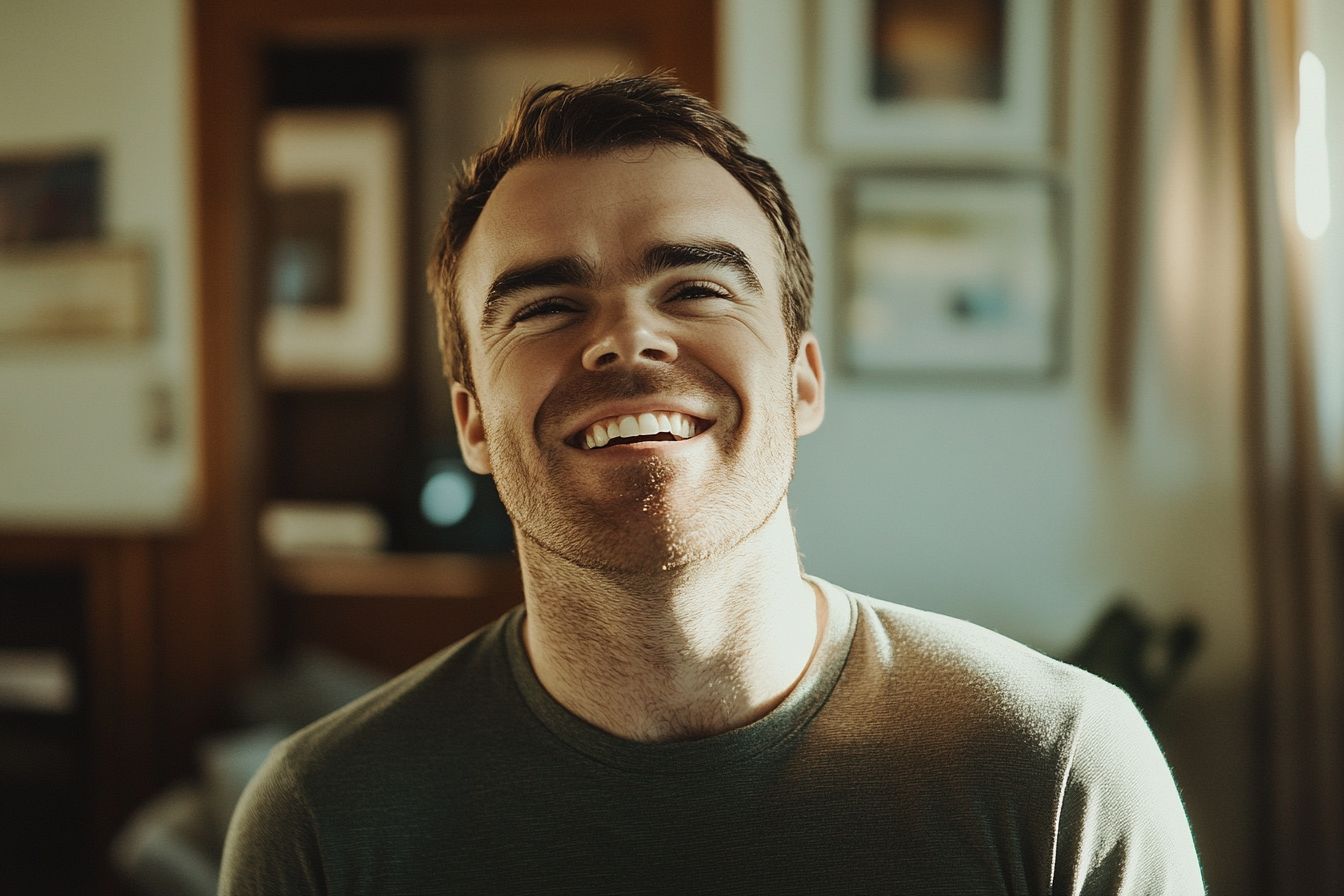
Um homem rindo | Fonte: Midjourney
“Isso não tem graça”, Hailey sibilou.
“Na verdade”, disse Carter, parando ao meu lado e passando um braço em volta da minha cintura, “é hilário”.
“Não podemos esperar que as crianças limpem”, protestou Sophia, com o rosto vermelho.
“Estou apenas seguindo as regras”, eu disse docemente. “As tradições familiares são importantes, certo? Você me ensinou isso!”
Patrícia se levantou, claramente tentando retomar o controle da situação. “Emma, querida, isso é inapropriado.”

Uma mulher gritando | Fonte: Midjourney
“É mesmo?”, perguntei inocentemente. “Mais inapropriado do que esperar que uma pessoa cozinhe e limpe a sujeira de 25 pessoas sem ajuda? Mais inapropriado do que fazer comentários sarcásticos sobre a minha comida enquanto você come a comida que preparei?”
As crianças continuavam cantando, cada vez mais alto. Várias delas já haviam começado a recolher o lixo do quintal, levando o desafio a sério.

Uma pessoa coletando lixo | Fonte: Pexels
“Mãe”, Lily puxou a blusa de grife de Sophia. “Nós vencemos! Temos que limpar!”
Diante do entusiasmo dos próprios filhos e do crescente constrangimento da situação, eles não tinham escolha.
“Tudo bem”, Sophia finalmente murmurou.
Entreguei a ela um par de luvas de borracha com um sorriso. “O detergente está embaixo da pia.”
Durante a hora seguinte, fiquei sentada no pátio com os pés para cima, tomando uma mimosa perfeitamente gelada, observando a mãe e as irmãs de Carter esfregarem a louça, limparem os balcões e varrerem o chão.
Carter se juntou a mim, batendo seu copo no meu. “Você é brilhante, sabia?”
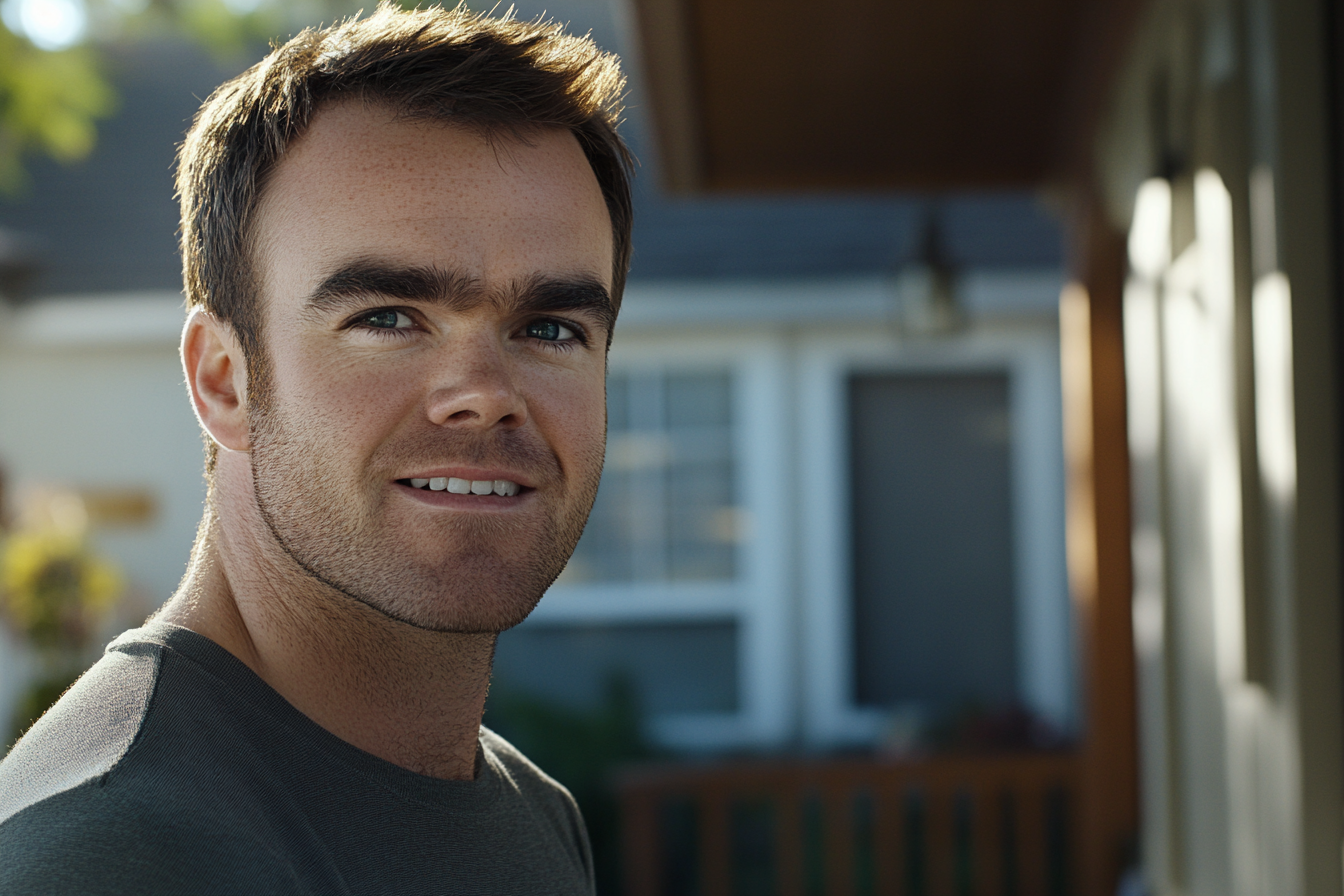
Um homem sorrindo | Fonte: Midjourney
“Aprendi com os melhores”, respondi. “Sua família sempre diz como é importante seguir as tradições.”
Enquanto eu observava Patricia esfregar desajeitadamente o molho seco da minha assadeira, ela me olhou. Por um instante, havia algo novo em sua expressão. Algo que parecia suspeitosamente respeitoso.
Na próxima Páscoa? Tenho a impressão de que eles vão trazer pratos e produtos de limpeza para compartilhar.
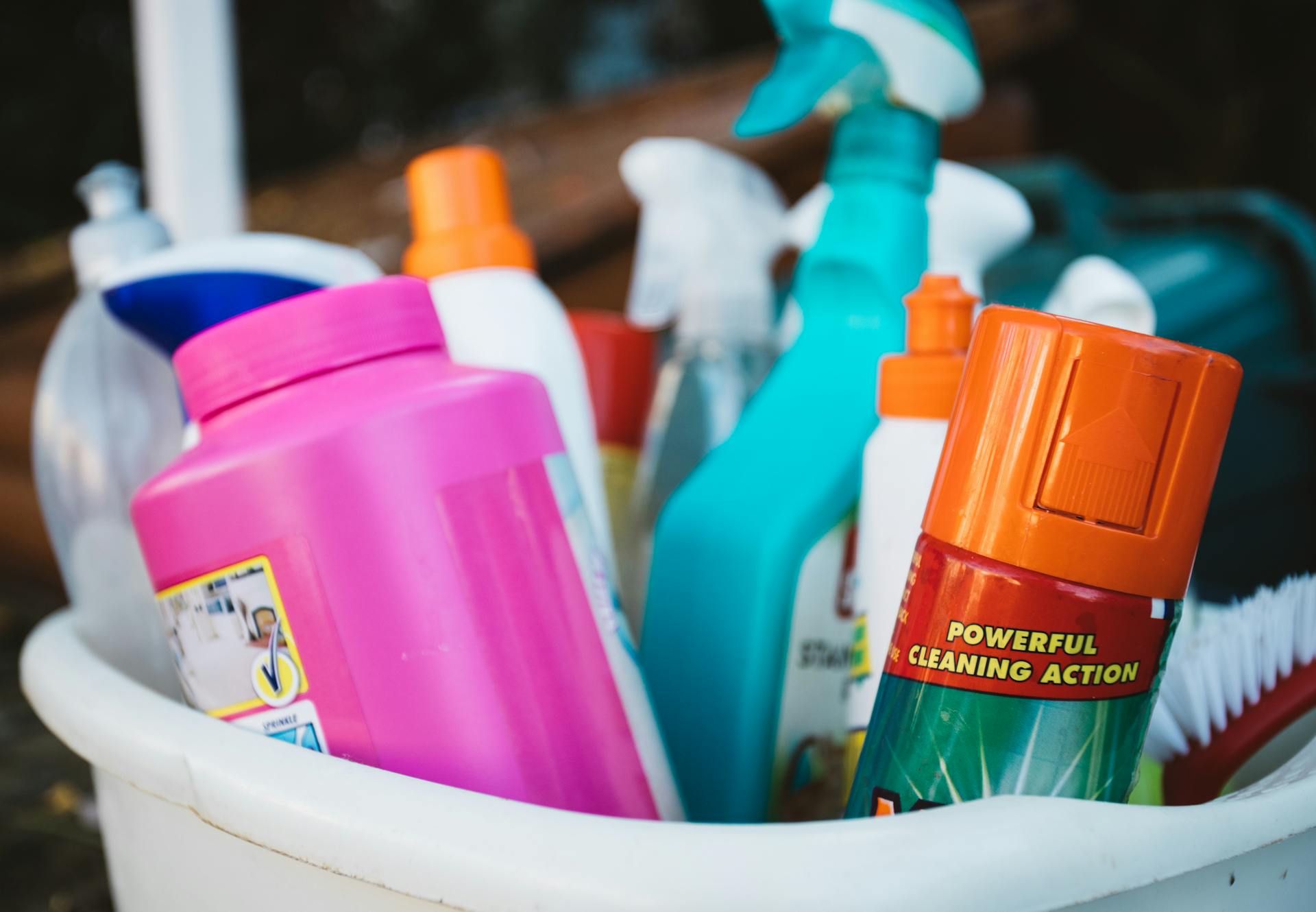
Um balde de produtos de limpeza | Fonte: Pexels
Dizem que a vingança é um prato que se come frio, mas o que preparei para meus netos depois que eles abandonaram minha esposa em um posto de gasolina foi simplesmente frígido. Às vezes, o amor parece lições difíceis, e às vezes as lições precisam doer para serem aplicadas.
Esta obra é inspirada em eventos e pessoas reais, mas foi ficcionalizada para fins criativos. Nomes, personagens e detalhes foram alterados para proteger a privacidade e enriquecer a narrativa. Qualquer semelhança com pessoas reais, vivas ou mortas, ou eventos reais é mera coincidência e não é intencional do autor.
O autor e a editora não se responsabilizam pela precisão dos eventos ou pela representação dos personagens e não se responsabilizam por qualquer interpretação errônea. Esta história é fornecida “como está” e quaisquer opiniões expressas são dos personagens e não refletem a visão do autor ou da editora.


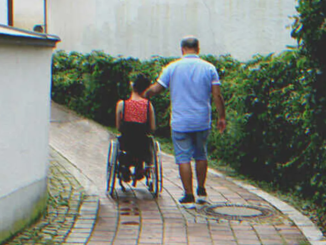
Leave a Reply